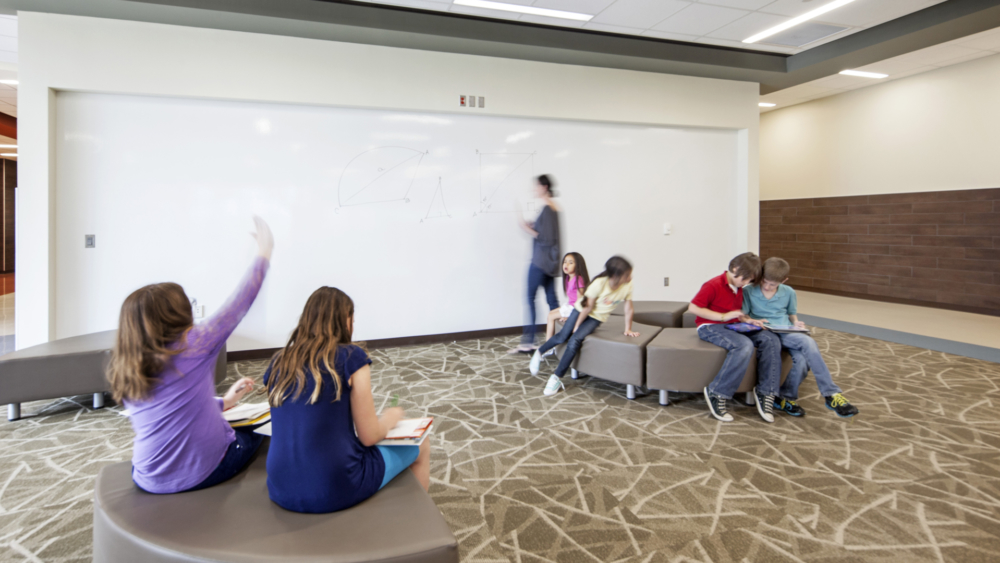
Generation Z
Students bring motivation to the classroom everyday. Really, you ask? Yes, really! We are each motivated by something and all have interests. How educators tap into students' motivations allows for meaningful learning. Today, regardless of the motivations they bring, students generally require an active learning environment. They like to see, touch, listen and move and many times, they require these things simultaneously. They have become accustomed to immediate feedback. They are comfortable learning by discovering their environment and participating, not by just sitting and listening. 'They' are Generation Z, our two to 19-year-olds born to Generation X parents. We know that the plasticity in the brain has changed with our younger generation, and meeting the needs of the learner now requires a unique approach in the classroom. Gone are the days of lecture and note-taking. Students are comfortable responding to their environment, and socialization is critical to their development. Now, students gather at Starbucks to complete projects. Homework time has been redefined so collaboration and technological stimulation can be achieved.
What does this suggest for education? Pedagogy is evolving to allow for student choice, and creativity. Research shows that three learning styles: active, sensing and visual are the characteristics that dominate the classroom. Some students still find lecture and note-taking pleasing, but generally the way to tap into a student's motivation is to have the material presented in a variety of ways. Materials presented by classmates or with hands-on opportunities are examples giving students the chance to make sense of the curricula. All of this coupled with the evolving technology advancements make it important to understand how to support learning behaviors. Did I mention that they are concerned with the environment? They view their world as digital natives, as opposed to their parents, the digital immigrants. They watch YouTube videos and are comfortable with their presence in every corner of our universe. They are aware of ideas that support sustainability, and practice recycling. Most importantly, they are requiring us to respond.
Sure, instructional changes in the classroom are critical to the development of students; but what about other aspects of the learning environment? In particular, we should think about the space students learn. Remember the traditional desk? In so many instances, a reiteration of it still exists in most classrooms, and too many times they are still arranged in rows (all facing the teacher, and allowing for little student-to-student collaboration). Teachers need to have the space to adequately support student learning. I don't just mean large space, but purposefully designed space that allows for various instructional methodologies, and flexible grouping of student sizes to foster independent work, partner work, small groups and large groups. They need to be a part of rearranging the classroom space with furniture that moves with them depending on their research needs, amount of collaboration required and floor space. They need quiet spaces, and spaces for dialogue. They need spaces to sit and think, and spaces to stand. They need tables for large projects, and walls that can record their notes. We need learning spaces that promote a sense of community, foster collaboration and support team learning that's occasionally messy.
When a new project launches, it is important for all students to hear and experience the same expectations from the teacher. However, the need for large group instructional space almost ends there until the end of the project. The ability to present what was learned is what we expect students to employ at the end of curricular units. In this case, students need a venue for both informal and formal presentations. How will those projects be displayed? Are they physical models, electronic presentations, lectures? Perhaps it's a skit, a song or a musical production. With student choice being a part of the way we approach discovery and project based learning, we need to be ready to allow for the final outcome of their choices, not just the space for them to learn. If we don't think about space differently, and provide the technology that they need, we ask students to remain in the proverbial box that has, for so long, defined education. For years, business has been informing education that students need, in addition to a rigorous academic experience, the ability to develop soft skillsto function as part of a working team in the industry. The opportunity for education to align to the 'real world' is here, but more importantly, studentsdemanda different approach.''